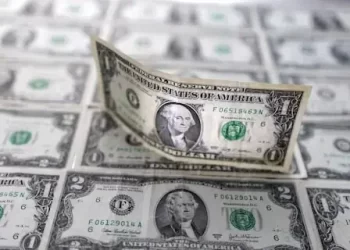The Pakistani rupee registered marginal improvement against the US dollar, appreciating 0.06% in the inter-bank market on Friday.
At close, the currency settled at 278.5, a gain of Re0.16, against the greenback.
On Thursday, the currency had settled at 278.66 against the US dollar.
In recent months, the domestic currency has largely been around 277-279 against the US currency as traders have an eye on some strong positive indicators.
Globally, the safe-haven Japanese yen and Swiss franc traded near multi-month highs against the US dollar on Friday after an unexpected slump in US manufacturing fuelled fears of a downturn, sending stocks and bond yields tumbling.
The yen was steady at 149.49 per dollar as of 0400 GMT, after strengthening as far as 148.51 overnight for the first time since mid-March. The franc gained about 0.1% to 0.87225 per dollar, and earlier reached its highest since early February at 0.8722.
They were the only two major currencies to outperform the dollar overnight, which itself draws safe-haven flows, paradoxically even when the United States is the cause for concern.
US 10-year Treasury yields plunged as much as 14 basis points to 3.965% overnight, breaching the psychological 4% barrier for the first time in six months, and extended those declines in Asia to a low as 3.944%.
Following the dour manufacturing numbers, traders now see 27.5% odds that the Federal Reserve will cut interest rates by 50 basis on Sept. 18, up from 12% odds a day earlier, according to the CME Group’s FedWatch tool.
Oil prices, a key indicator of currency parity, rose on Friday but were on course for a fourth successive weekly decline as signs of disappointing global fuel demand growth outweigh fears of supply disruptions on rising Mideast tensions.
Brent crude futures gained 46 cents, or 0.6%, to $79.98 a barrel by 0841 GMT, while US West Texas Intermediate crude futures rose 51 cents, or 0.7%, to $76.82.









